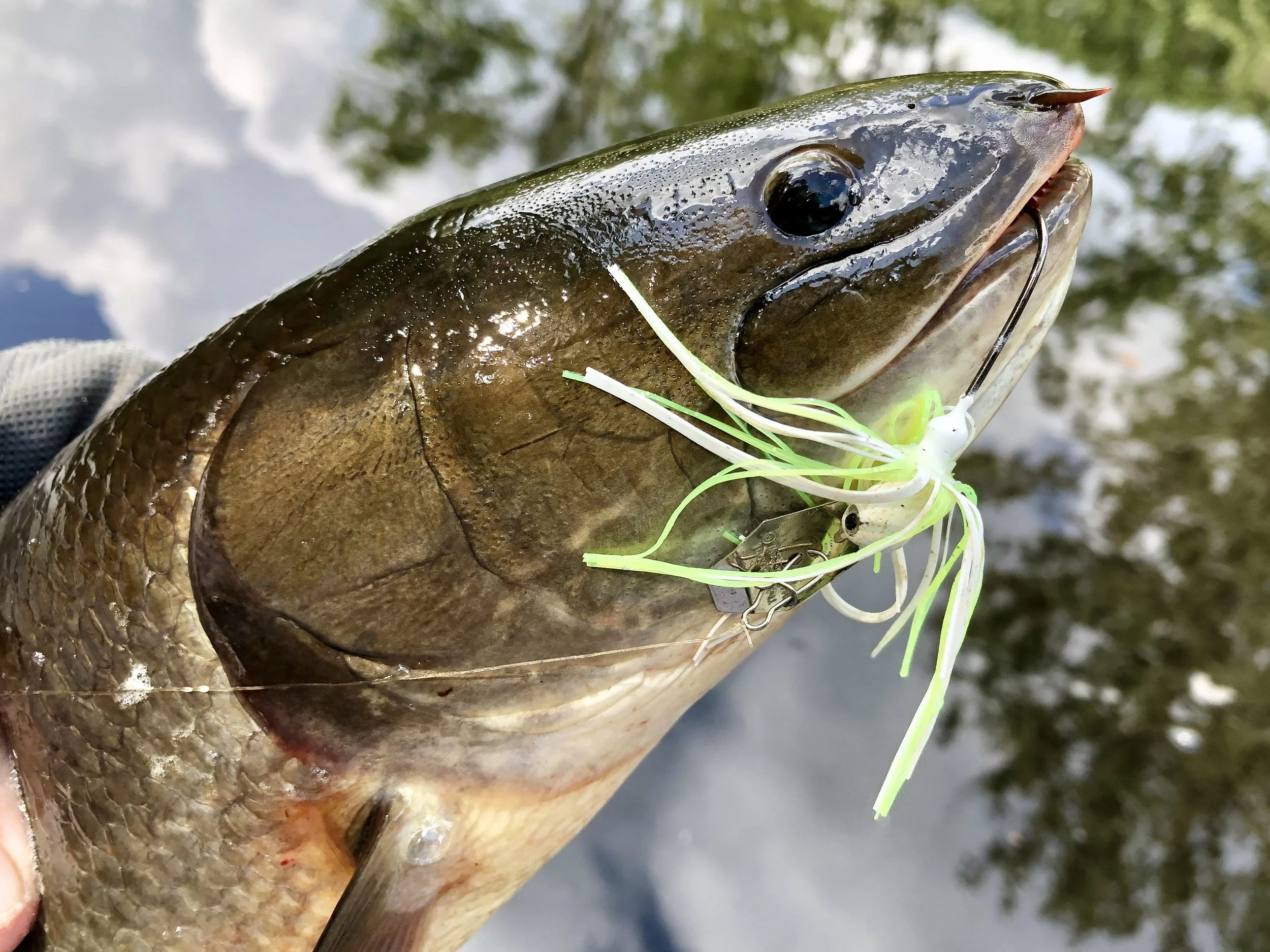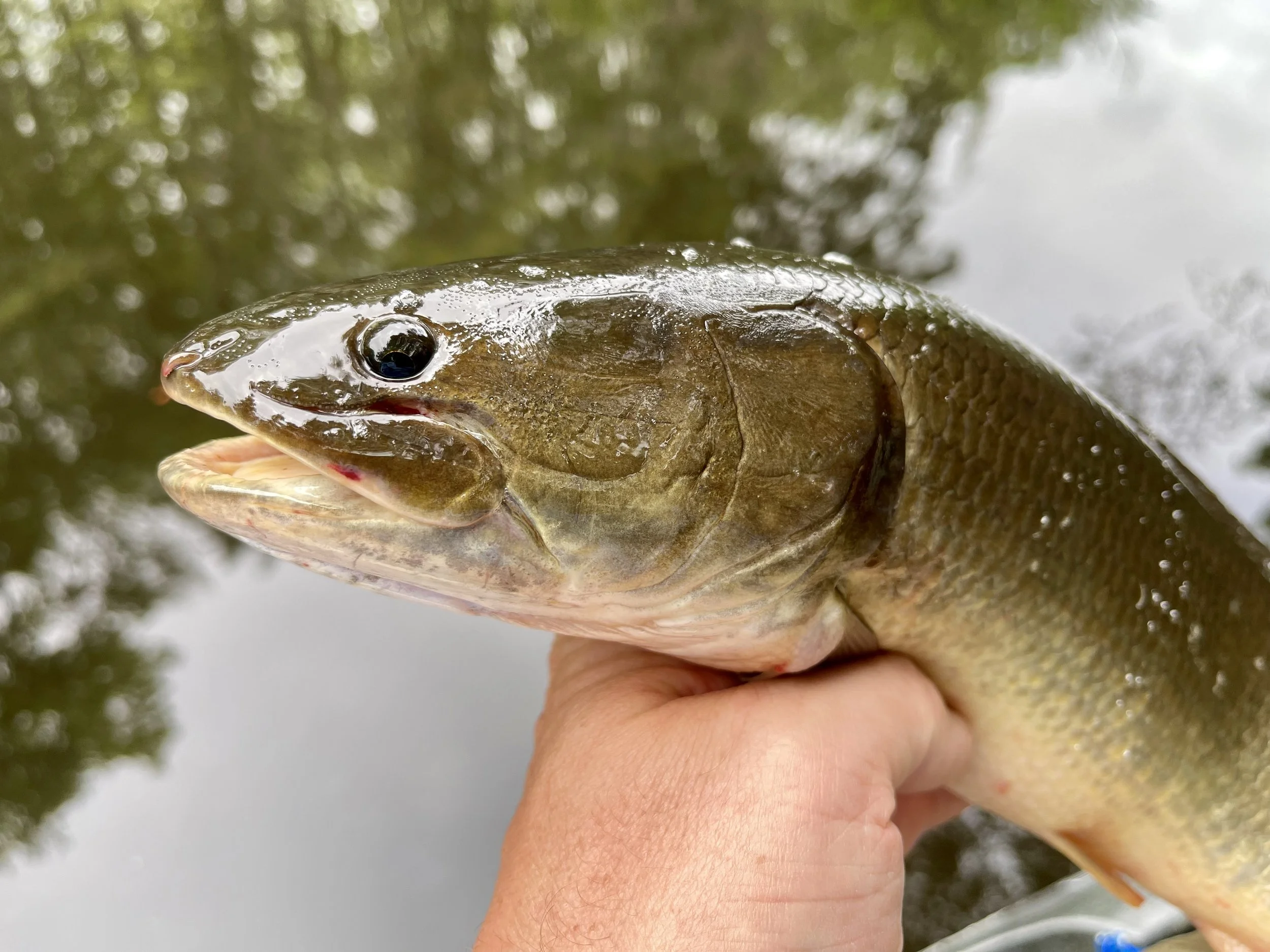The Mighty Prehistoric Bowfin
Close-up of a Lowcountry bowfin with the lure still in its mouth. Note the unique barbel-like flap associated with the nostril.
A reason why we love living in the Lowcountry is the wide variety of fish species that call this area home. A native species that doesn’t always seem to get the respect it deserves is the bowfin (often referred to locally as mudfish). The bowfin is the last surviving species of the Amiiformes order and is considered a living fossil species since many of its characteristics remain similar to its ancestors dating back to over 180 million years. One of those characteristics is that bowfin are bimodal breathers in that they can breathe both air and water which allows them to adapt to waterways with lower oxygen levels that may pose problems for other species of fish. They are amazing fish to catch, and to see one up close is akin to holding a piece of living history. South Carolina is home to the International Game Fish Association’s (IGFA) All-Tackle World Record bowfin (21 lbs. 8 oz.), making this one of the best places in the world to target this incredible species!
Jason Schall with a Lowcountry bowfin.
We tend to find bowfin in freshwater habitats with a low current such as swamps, oxbows, and sloughs – one tell-tale sign is to watch for bowfin breaking the surface of the water to take a breath of air. They are ambush predators, and they are not shy once they take a swipe at your bait. We’ve had success with artificial worms, spinnerbaits, blade baits, realistic swimbaits, and they do love live bait as well. We like to use a medium-action rod paired with a 2500 or 3500 size spinning reel to make sure our gear is strong enough to handle the fight. Once they hit your bait, you will learn quickly how powerful these fish are. The bowfin’s bite is voracious, they will go on long runs, and if you’re lucky enough to keep them on the hook, you’ll see some above-water acrobatics! When it comes time to land a bowfin, we always have a net and fish grips on hand. They do have sharp teeth, so keep your hands away from their mouth. Use the net to safely get them in the boat and leave them in the net because they will continue to fight long after they are taken from the water. We’ve known quite a few people who made the unfortunate decision to take a bowfin out of the net immediately after landing it (with the hope to get a quick picture or measurement), only to have it continue to thrash so violently that it either breaks or kicks gear out of their boat! Remember that the bowfin can breathe air, and can also tolerate warm temperatures, so you do have a little extra time to let it calm down before getting that grip ‘n grin shot. Bowfin aren’t known for being particularly tasty fish, so catch-and-release is a common practice.
Close-up of a Lowcountry bowfin.
Fishing for bowfin here in the Lowcountry really picks up in the spring and continues to be a fun species to target through the summer and fall. A local kayak fishing group, the Lowcountry Kayak Anglers (LKA), holds an annual tournament in August specifically for bowfin, aptly called the Jurassic Classic. Catching any fish from a kayak puts you closer to the action, and being able to see the power of a bowfin up close at water level provides such an adrenaline rush. The numbers put up by the LKA (and their up-the-road friendly rivals from the Pee Dee Kayak Anglers club) is nothing to scoff at and shows that the bowfin population here in South Carolina deserves respect as an exciting gamefish to target.
To learn more about the bowfin in South Carolina, check out their page on the South Carolina Department of Natural Resources website.


